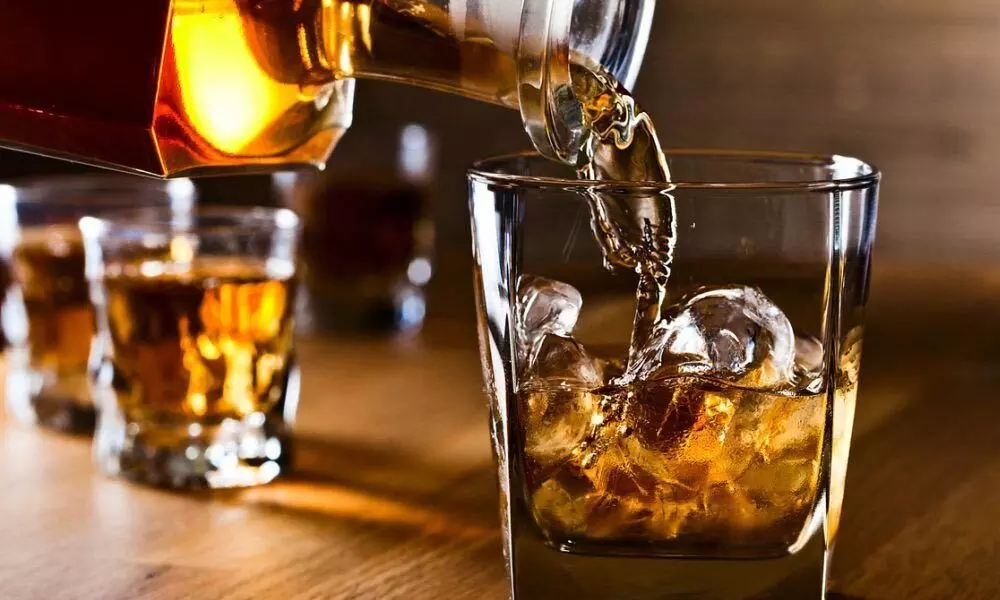Sale of expensive liquor brands on the rise in India
The Indian alcoholic beverage industry is behind only two major countries such as China and Russia. The consumption of alcohol in India will reach 16.8 billion liters by the year 2022
image for illustrative purpose

The IWSR's Status Spirits Strategic Study showed the value of the status spirits market (excluding baijiu) was worth $8.3 billion, and grew at a compound annual growth rate (CAGR) of 7 per cent from 2014 to 2018. In comparison, the total global spirits market grew by 2 per cent value CAGR. The segment of brands that sells for $100 and more 'historically tends to be resistant to economic uncertainty', the IWSR noted.
The Indian alcoholic beverage industry is behind only two major countries such as China and Russia. Growing demand for alcoholic beverages in India is largely attributed to a huge young population, a demand for alcohol in this generation, as well as rising disposable income. With a population of 1.3 billion, India is one of the largest consumer markets across the globe. It is also demographically one of the youngest with around 50 per cent of its population below the age of 25 and around 65 per cent below the age of 35. Goldstein Research analyst forecasts the India alcoholic beverages market to grow at a CAGR of 7.4 per cent during the forecast period 2016-2024. Further, the market is anticipated to reach $39.7 billion by the end of forecast period as alcohol consumption is growing in urban areas.
Premiumization has been an especially significant factor in the Indian alcoholic beverage industry, with the proliferation of budget options making premium products more appealing, and consumers likely to treat drinks as something worth spending a little extra on. All indicators are that this trend will actually accelerate in 2021 and beyond.
This trend shows no sign of slowing. IWSR Drinks Market Analysis estimates that the market share of premium or 'super-premium' alcoholic drinks will grow to 13 per cent by 2024. Meanwhile, GlobalData reports that over 40 per cent of consumers buy premium/luxury alcoholic drinks at least occasionally. This represents a sizable audience for the companies to target if they can produce the right products. Sales of 750 ml bottles of premium drinks priced at $200 and up are expected to grow 9.3 per cent annually until 2025, outpacing lower-priced drinks, according to the IWSR Drinks Market Analysis. In contrast, sales of $10-per-bottle products - so-called value brands - are forecast to grow just 0.8 per cent annually over the same period. The Indian consumer has been divided into five different classifications. While the top most of the pyramid, or the elite class, is just 4 per cent of the overall population, the absolute numbers are far too attractive for any luxury brand to ignore. These numbers are expected to grow from the current 10 million to 26 million households by 2025. In addition, by 2025, the overall average household income is expected to multiply by 1.7 times. This, in itself, is an attractive proposition for any global retail brand. With 8.8 per cent of growth (CAGR), Indian alcohol market has grown to become the 3rd largest liquor market globally, the market size of liquor sales in India is over $35 billion. A little over 600 million people in India are over the legal drinking age in India.
Other than India being the largest consumer of whiskey in the world, wine is becoming extremely popular especially among women in India. There is 22.8 per cent growth in the vodka's demand. The consumption of alcohol in India will reach 16.8 billion liters by the year 2022.
Most of the sale of alcohol in India is coming from Tier 1 and Tier 2 cities. Growing income leading to rising spending power mixed with access to alcohol at restaurants and liquor stores is the reason for such a remarkable increase in demand. The share of alcohol imported into India is one per cent of the Indian market which is negligible primarily because the heavy duties and taxes raise its price. But, nevertheless, there is a sizeable income group which can easily afford the expensive brands. According to the study conducted by Business Wire, a Berkshire Hathaway Company, 'high demand for expensive liquor, the market scenario seems to be very optimistic in the near future'.

